
 |
Jumping through 'loops': A reflective study on preparing generalist pre-service teachers to teach music
John Heyworth
Edith Cowan University
Generalist classroom teachers are being given more responsibility for music education in their schools. How confident and competent are they to do this? I find myself in a position where I am expected to train pre-service generalist teachers to be able to facilitate music in their future classrooms within one unit of music study over a four year general bachelor of education course. This paper is a self study on how I reflect on and describe the methods and the tools that I have used to try to both encourage and empower pre-service teachers to facilitate musical activities in their classrooms. I have structured this study in way that I hope to be engaging, informative and accessible to the general educator as well as to the specialist (Sword, 2009). I begin with my planning and delivery of content and follow with an example of tutorial presentations. Here I explain how the pedagogical content moves from acoustic to digital music using the concept of loops (repeated passages of sounds) as scaffolding for musical participation and expression. Finally, I conclude with future directions for my journey in the role of music education in generalist pre-service teaching.
"Without music, life would be a mistake." (Friedrich Wilhelm Nietzshe)In 2007, after thirty years of teaching in primary schools, I started to lecture generalist pre-service teachers on how to incorporate music into their classrooms. When I took on this role I was very aware that more and more responsibility for teaching music was being thrust upon the generalist teacher - as noted by Jeanneret, in Sinclair, Jeanneret and O'Toole (2009, p. 103):
Although some school systems maintain music specialists in primary schools, the reality of the situation is that a large number of generalist primary teachers in Australia, Great Britain, and North America have the responsibility for teaching music in their classrooms.This shift in responsibilities for the classroom teacher has posed many challenges: What is appropriate music education in the classroom? How can a teacher best teach music in today's modern world? What sort of music is relevant for the modern classroom? So many questions, but how best to tackle them? In this self-study, I position myself as a reflective practitioner (Schön, 1986) and explore the directions I am taking to develop my praxis as a lecturer. I am attempting to "make meaning out of the realities" of this situation I find myself in (Crotty, 1998, p. 8), and in discussing my reflective practice I hope to have captured a developing approach to the problem of preparing generalist teachers to teach music. Walkerden (2009: p. 252) asks that:
Practitioners reflect on where they are coming from now, and how that carries forward where they are coming from. From a research perspective what is particularly important to capture are the practitioners' shifts in understanding of how to orient themselves in situations of this kind.By my learning from experience (Boyd & Fales, 1983) and discovering and describing new understandings (Jasper, 2005), I am more likely to integrate these understanding into my future thoughts and actions (Raber Hedberg, 2008). As I reflect on my practice and allow others to 'look over my shoulder' hopefully this will help enable me to improve my practice and allow others to gain some insights from these experiences.
My first challenge as a lecturer was to reassure worried pre-service teachers that I wasn't going to make them sing solo in front of their tutorial groups! I recently conducted a short survey of undergraduate students at ECU (Edith Cowan University, n=70) and found that nearly 50% were worried about their own perceived lack of musical ability at the start of the music course. Judging by the apprehensive looks on many of the students' faces at the start of each semester, I wasn't surprised by this. In fact, it was hard to know who was the more nervous, the students or me.
It is clear that this lack of confidence and resulting apprehension to music education for generalists is not an uncommon experience. Holden and Button (2006) found that respondents to their study ranked music as the lowest subject in confidence to teach. It was interesting to note that their respondents felt very vulnerable due largely to their own inability to read music. Furthermore they felt that music was a specialist subject unlike any other subject in their national curriculum. Seddon and Biasutti (2008) also found that students perceptions of music as a specialist area had a significant impact on their confidence to teach music in the classrooms. Jeanneret (in Sinclair et al., 2009, p.103) makes an important acknowledgement when she says that "teachers own musical experiences frequently shape their attitude towards, and confidence in, teaching music." Indeed Wiggins and Wiggins (2008, p. 24), in their study on primary music in the absence of specialists, found that most of the generalist teachers that they had observed "were not able to teach in ways that would connect to and foster students' musical understanding." So how to address this problem? In a constructivist approach (Crotty, 1998, pp. 8-9) pre-service teachers may learn best through their own opportunities to construct understandings through experiences in relevant music making: performing, creating and listening as opposed to "music contrived to teach a particular concept." (Wiggins, 2007, p. 39)
From the outset I certainly wanted to engage all students and was determined to design activities so that all students could:
Initially I was allocated two tutors to help me plan and run this unit; they were both professional musicians. I was merely a teacher with a little talent for music but certainly not in any professional sense, so I found the situation a little intimidating and hoped it was not a case of "those who can, do; those who can't, teach." One of the tutors was a talented singer and guitarist and the other was a contemporary composer and a 'wizard' with technology. The one significant advantage I had was my extensive background in teaching both as a general teacher and a specialist music teacher.
Drawing on our combined strengths and experiences, we mapped out the semester's work within the guidelines of the unit outline, the required text and the only available instrument - the recorder! I knew straight away the recorder could be a problem. That well known 'instrument of torture' has been a bone of contention for many decades and could undo any attempt we made to make music relevant, modern and engaging for university students. Sadly the recorder can have a poor image mainly due to the overuse of the descants recorder, which, when blown shrilly by 30 or more enthusiastic children, can cause some significant disturbances to nearby ears. (Children are keen to please, so how can they please unless they are heard? Therefore they all blow as loud as they can so you might notice them above the rest!) I knew that if taught properly, and in parallel with the kinder tones of an alto recorder, recorders can be a cheap and effective way of engaging children in music making. However, such skills and ideologies were beyond the limitations of the time we had in the unit we were planning.
We had to remember that undergraduate generalist pre-service primary education is a four-year degree course at ECU, in which students have one unit of study in music which is the equivalent of about 36 hours of tuition to prepare them to teach music in the classroom. Not a lot of time! As noted by Pascoe, Leong, MacCallum, Mackinlay, Marsh, Smith, Church and Winterton (2005) in their national review of school music education, the hours of pre-service training in Australian Universities have contracted significantly over the last ten years.
So this was going to be a challenge. The planning stages had to focus on making each tutorial count. We needed to teach some basic skills as well as look at strategies that could be directly applied in the classroom. In the words of Wiggins (2007, p. 40), "to start where the students are, to link to their perspectives, to recognise and honor the knowledge they bring to the experience." Although Wiggins was relating this to a dedicated music course, I believe this applies just as importantly to a music unit in a general education course. Whereas some basic notation was needed to be taught, we were not going to let any lack of notation or music theory hinder music participation. We needed to facilitate learning that would build upon the various skills students would bring into the unit in a social constructivist approach. We needed to be modern and engaging and 'real' in our music strategies. Therefore, we decided to use the recorder sparingly and emphasise the guitar and modern music technology. Luckily the University was agreeable to these initiatives and invested in some guitars and some music software.
The guitar proved to be a good choice. Many songs can be played on the guitar with only three or four basic chords, and it is an instrument that is portable and easy to play. The other advantage is that when someone is learning to play the guitar their focus is on the guitar and not on themselves singing. The technology was an even bigger success. For this we chose software called the Super Duper Music Looper, now known as Jam Trax (Sony, 2010). It is simple to use, with a very user-friendly interface with an uncluttered cut and paste panel. The sounds are professional and satisfying to the ear. We now use Acid Music Studio 8, also by Sony. There are many other looping software packages available with varying levels of difficulty (and prices!). For young children there is Flexi Kids Composer (FlexiMusic, 2010) or the Groovy series by Sibelius (Avid, 2010). More advanced are Fruity Loops (Image Line Software, 2010) or ReCycle (Propellerhead Software, 2010).
Eventually we completed the planning of our tutorials along with some practical and written assessments. We were ever mindful that we were gearing up to skill non-musicians and to challenge the more musically able students. The challenge for assessment was to measure student development without comparing one student's musicality against another's. Group work was a way to focus on the creative use of each member's talents, where the innovative use of sounds was the focus rather than looking at how clever a person was at playing a musical instrument. Success breeds success. As noted by Seddon and Buisutti, (2008 p.417):
It could be argued that by facilitating feelings of personal success at various aspects of music that participants considered fundamental to a person's musicality (e.g., engaging with an instrument, knowledge of musical form and structure and experience of improvisation) participant confidence in their musical abilities was increased and in this way the 'cycle of low expectation' was interrupted.
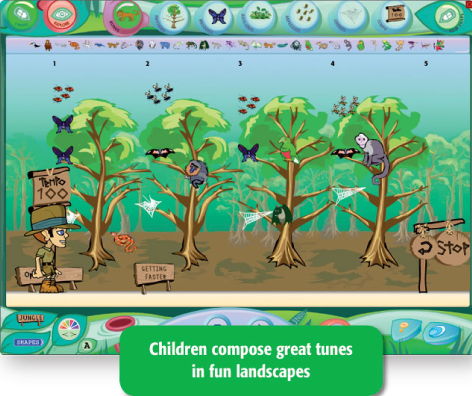
Figure 1: Groovy (Groovy Series by Sibelius, Avid, 2010)
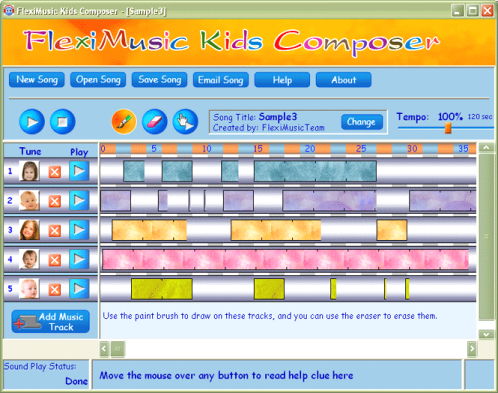
Figure 2: FlexiMusic Kids Composer (FlexiMusic, 2010)
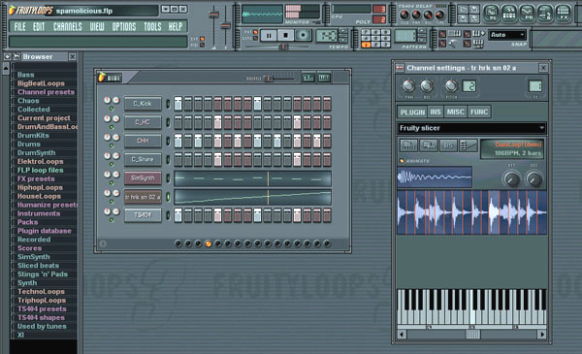
Figure 3: Fruity Loops (Image Line Software, 2010)
Seddon and Buisutti found that engaging students in informal music making utilising 'pop' ideas like the '12 bar blues pattern' made music feel 'real' and accessible to all students and not just for 'special' students. While my focus in music styles is more eclectic, it would be remiss of me to ignore popular music just as it would be to ignore classical, folk or any other genre of music (Moore, 2001). Student confidence was a key issue. It wasn't unreasonable for me to assume that a lot of the students would be feeling apprehensive about being under-prepared, unmusical or even musically challenged, to the point of having a music phobia. Of course students go to university with attitudes to music that they have developed over their lifetime (Russell-Bowie, 2002). Their musical confidence, or rather the lack of confidence, remains a common feature of teacher training courses (see Jeanneret, in Sinclair et al., 2009, chap. 3).
At this stage it hadn't escaped my attention that I was going to be solely responsible for the delivery of all the lectures, - and standing in front of 150+ students to convince them that music was accessible, achievable and relevant to all was a daunting prospect for me.
Even today I am still very nervous about walking into a lecture theatre and still use Mozart as a calming influence. I think that the main source of the nervousness is that I really want students to connect and see the potential for music in their lives as well as in their teaching. I am always concerned in lecturing of the need for immediate impact. I feel that if I can inspire them early on, the rest of the semester will fall into place. I don't want to bore them with a monologue delivery. I want it to be interesting as well as informative. Luckily the modern lecture theatre allows me to use my laptop, which opens up all the multimedia and internet benefits one receives from using a modern computer. Many people are visual learners (Gault, 2005). Technology helps make my lectures stimulating because I can access images, video clips and sounds to illustrate or consolidate any points I wish to make.
Other technologies at my disposal include keypads that allow for individual participation and instant feedback on the projected screen. And there is the capacity for lectures to be recorded and turned into podcasts. But I feel that I am only scratching the surface of the potential here because there is an ever increasing demand for online delivery of lectures. The Horizon Report (2007) states that "the environment of higher education is changing rapidly"(p. 3) and that "higher education is facing a growing expectation to deliver services content and media to mobile and personal devices."(p. 5) It's hard to disagree with this. It might be a way to avoid that dreaded vacant stare of disengagement, which I have been told by students is largely due to a hangover. Despite my best efforts I occasionally get those vacant stares, along with chatting students, mobile phones, Facebook and Skype intercourse - especially at the back of the lecture theatre!
While my mode of lecture delivery has been ever evolving, so has the content. Over the years I have sectioned lectures into three main areas:
In terms of music and the creative arts, Professor Sir Ken Robinson (Aronica & Robinson, 2009) is a very strong advocate for creativity. Being creative with the arts may be just as important, or even more important, than being merely skilled in the arts. A creative approach would allow students to use whatever talents they had at their disposal to 'make something original' (Aronica & Robinson, p. 72). I think this is a good approach. In my lectures I illustrate creative uses of music such as:
The final section of my content involves how the arts can support and enhance the curriculum. As stated by Pound and Harrison (2003, p. 68)
Cross curricular approaches enable children to make links or connections across different areas of learning and music plays an important part in supporting this process.Examples of cross-curricular approaches are:
Looking back on those early years, I felt the lectures were quite successful and the tutorials went to plan. Unfortunately, I made one monumental blunder in my first year.
What should have been a successful start to my university career was less than satisfactory as far as I was concerned (even though a very kind senior lecturer had told me that the marks were far less important than the experiences I had given). Matching assessments to the theory and learning has now been something I've given a lot of thought to. While I believe assessment should still be fair and relevant to all students, assessment should also be an integral part of the learning experience. Despite the many rubrics and criteria designed and given to students, assessing creativity without being subjective is extremely difficult. Currently I am involved in a team who are trialling web based assessments that are interactive between tutors and students. This software application is interactive in real time and can incorporate videos, images sounds and text; perfect for performance appraisals and quality feedback. Portability through the use of devices like the Apple iPad has exciting implications for assessments across all disciplines. Assessment, as a part of my teaching and learning, is another work in progress and will be a subject of further research (Wren, Campbell, Heyworth, & Bartlett, 2010). The team has been looking at multiple markers as a means to make assessment fair, valid and reliable. Our current focus will be to look at student participation in assessment procedures. In the meantime I endeavour to be more critical in the marking of summative assessments, while still being encouraging in a more positive constructive manner in the formative assessments. I avoid words like penalties or deductions and prefer to reward work in an ongoing effort to encourage future learning beyond university study (Boud, D. and Falchikov, N., 2006).
Ostinato is a good old-fashioned term for a repeated pattern of sounds. In pop music 'digital loops' are a modern extension of an ostinato. I briefly discuss both these terms with my students.
Loops: loops are simply recurring sections of digital audio. (Williams & Webster, 2006)For the purposes of my workshops, I will use the term loops to describe repeated patterns of sound, whether generated acoustically or digitally. There are many examples of loops that can be found on Youtube and in modern pop songs. A Kevin Heinz vocal loop is one such example (Heinz, 2010). Those of you in my generation may remember the track Money by Pink Floyd. This starts off with a recorded loop of a cash register, which sets the beat and rhythm for the song. Today loops are often digitised and stored in digital libraries, many of which are free for anyone to download and many are also free of royalties. Loops are often very professional and very high in audio quality. Many modern dance tracks can be easily created by cutting and pasting loops along a timeline interface. Thus people can create music without ever having to understand a single note of music. Some may see this as a sad trend in music, especially in the creation of muzak. I hope this is more an opportunity to open the doors for more people to be artistic and creative with music and sound. As stated by Williams and Webster (2006, p. xxiii):Ostinato: constantly repeated musical pattern, rhythmic or melodic. (Farmer, 1982, p. 337)
As researchers, educators, and musicians, we saw the role of music technology as a major force in teaching the technical aspects of music and, perhaps more importantly, encouraging the creative experience of music composition, improvisation, performance, and music listening.'Beat' is another important musical term. Like the heartbeat it is the underlying pulse that holds music together. Depending on its speed, music can make us want to walk, march, dance or relax. I demonstrate this with some brief examples, which include waltzes, marches, jives and meditative music. I keep this discussion short. To demonstrate loops and beats, I get the students into small groups of four to six people. Each individual invents, discovers or creates a sound. To make the loop work, each person in turn makes their noise going around the circle. There is no right or wrong way, as long as they just keep going. After a few minutes of practice we listen to each group. Like waves in the ocean, I have never heard two groups sound the same. Students can be very inventive in the sounds they make and the male population are often very clever in involving sounds one might expect to hear in a toilet block! This activity is then repeated with untuned percussion instruments. All people of all ages love to hit, bang or scrape things to make a noise. Because there is no notation, these loops are often very creative and uninhibited. The last step in this exercise is to try and fit all the loops together. One group starts off and then the others join in one by one. This is often enjoyable and chaotic. I introduce some expression like 'louder', 'softer', 'faster' and 'slower'. I ask my students to think about the difference between making noises and making music. I now introduce the beat circle (Leask & Thomas, 1998). This is the first form of notation we explore.
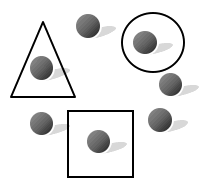
Figure 4: Diagram of the beat circle
Before embarking on our group work we explore this notation as a whole group. I ask someone to keep the beat on a drum or similar instrument. They play the beat as I point to each dot. I then ask one group to make a noise when I reach the circle around the beat dot. Another group then makes a different sound on the square and finally another group for the triangle. This is demonstrating the beat underlying a piece of music. What we are introducing is the concept of rhythm. Rhythm consists of sounds and silence that sit over the beat. And because we have two sounds occurring at the same time we have also introduced harmony. Then I ask them to make up their own loops in their groups. This time one person keeps the beat on their instrument, while the others make a sound to fit that beat. The results are quite accurate. Everyone is participating and creating rhythms that fit in with the beat. But I ask them to listen and concentrate on the difference between the first activity and the second activity. Very often the second activity, while being correct, lacks spontaneity and excitement. To overcome this, I nominate somebody to be a leader and start a beat up; everyone will line up behind the leader and, as they play their instruments, the leader takes them in and out of obstacles around the room. Every now and then I change the leaders. The music becomes more spontaneous and free. Again we introduce expressions like 'loud', 'soft', 'fast', and 'slow'. We discuss how movement can free up our music making and make us less inhibited. At this juncture I make mention of the famous music educator Emile Jacques-Dalcroze and Eurhythmics (Seitz, 2005). Not for over-long though. It's time to look at the rock 'n' roll drum kit.
This is a body percussion exercise that can be transferred to a basic drum kit. I am not a percussionist and I apologise in advance to any drummers in the class. Rock 'n' roll is often over four beats. The students use their right foot on the virtual bass drum pedal to drive the beat. The time has come to introduce some traditional notation. Music is read left to right, as we read text. We tap our foot for each stroke of the line. I now introduce other music educators:- Zoltan Kodaly and Carl Orff (Lane, 2006) and their use of French time names that can help children (and adults) keep in time - good old-fashioned stuff, but set in a modern context. Students can vocalise or internalise Taa Taa Taa Taa as they tap their feet while remembering that good drummers keep a steady beat.

The repeat sign is to show that this is a loop.
Next they use the right hand on the left knee and add the snare drum. New concepts here are off beats and silence (Saa). Again we are adding rhythms and harmony.

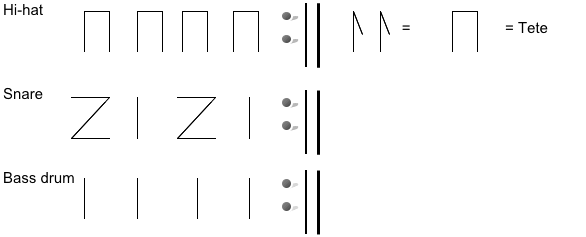
I illustrate the point here that while one student may be struggling with coordination the person next door is sailing right ahead. That is the way of things: everyone learns at their own pace. But with practice anyone can play the drums. This is a good discussion point for developmental approaches to education. I make the point quite strongly that everyone has participated in music making irrespective of their musical backgrounds. All the activities I do can be directly transferred to the primary school classroom setting. And so the tutorial goes on. The guitar is introduced again with the concept of keeping a beat and a loop, which can underline very simple songs that can be used with children. The exploration of loops is doing a lot of groundwork in preparing the students to be able to use looping software in later tutorials.
I believe this approach works because the theory follows the practice, which seems the reversal of what usually happens at universities, but is in keeping with the philosophies of Dalcroze, Orff, Suzuki and Kodaly - that is, active participation creating the understandings of theories (Seitz, p. 431). In a nutshell, the students are learning basic skills and concepts that enable them to participate in music. In 'theory speak' this means that creativity; discovery and exploration are key ingredients to students' development in music.
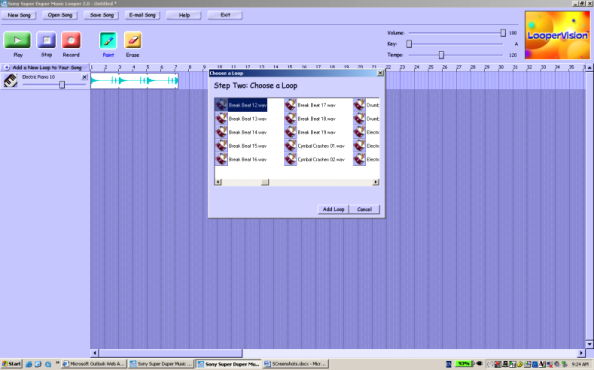
Figure 5: Sony Super Duper Music Looper: Choosing and pasting a loop (23/01/10)
Although not really suitable for very young children, the interface is still quite clear and simple to use: cutting, pasting and erasing loops is very simple. There is also the scope for real time editing with this software, and individual or global volume, key and tempo changes that can be set. Loops can be created from any sound file stored on the computer (the obvious copyright issues are evident here). However, the software itself comes bundled with free loops if the hard copy rather than an online copy is purchased. Extra professional libraries of sounds can be purchased online, and there are many royalty-free libraries to be found at little or no cost. There is a facility for users to record their own loops using the record button. Students can use a computers' built-in microphone or external microphone. The quality of this depends on the sound card and microphone used, and in schools this is likely to be adequate rather than good quality sound. There is an inbuilt synthesizer which can be linked to a MID keyboard. This type of software has the capacity to cater for all levels of musical expertise. It could prove to be a useful collaborative tool for group work, especially with the aid of interactive whiteboards.
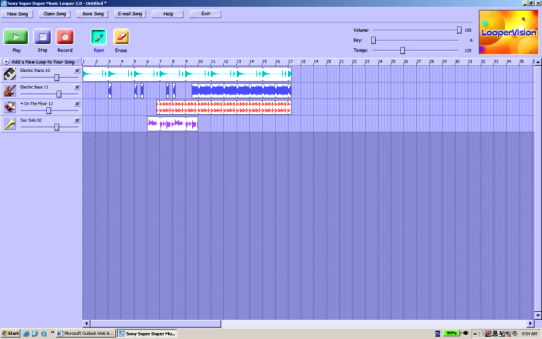
Figure 6: Sony Super Duper Music Looper (23/01/10)
A more advanced looping software is Acid Music Studio 7 (version 8 is now available).
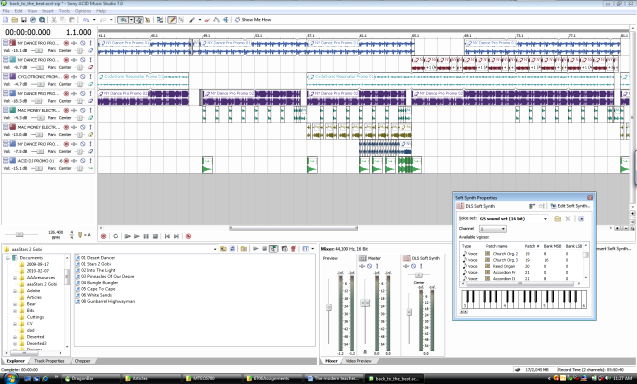
Figure 7: Sony Acid Music Studio 7 (23/01/10)
Completed compositions can be exported to the desktop or a folder as an audio file, for example a WAV file or a compressed MP3 file. This is extremely useful for teachers to use student compositions for classroom projects. Audio files can be used as soundtracks for simple animations, videos or PowerPoint presentations. Multimedia resources can be created for use on the Internet, digital TVs, CDs, DVDs, MP3 players and iPhones.
As mentioned earlier, there are more and more looping packages becoming available. The first criteria I look for is in any of these is ease of use and an uncluttered interface.
Student outcomes can also be addressed in Arts Skills, by exploring form and structure by asking students to create a mood change. For example: create section A with loud percussive sounds, the section B with quiet melodious sounds. This can then be arranged as a 'Binary' piece AB or 'Ternary' piece ABA.
All the outcomes; Arts Ideas, Arts Skills, Arts Responses and Arts in Society, can be addressed in listening, creating and performing activities incorporating basic studio recording techniques. Some discussion of the future of the recording industry in context of modern digital software is an interesting topic here. Basic orchestration and/or recording styles can also be taught, for example, laying down a rhythm section (drums and bass) before adding guitar vocals and then embellishing with guitar licks and horns.
I used the Acid Music Studio with Early Childhood pre-service teachers in semester one 2009. As part of their ongoing learning and assessment program, students critically analyse and review resources incorporating sound and music for early childhood students and teachers. These reviews are presented in tutorials with a view to students collaborating to produce their own original resources for their future use in schools. The Arts outcomes mostly addressed were: Arts in Society, Arts Ideas and Arts Skills. Resources were allowed to be cross-curricula and in the format of songs, poems, stories, dance drama or movement.
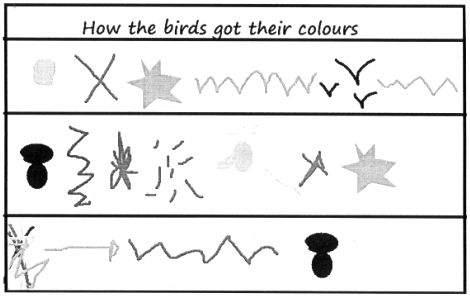
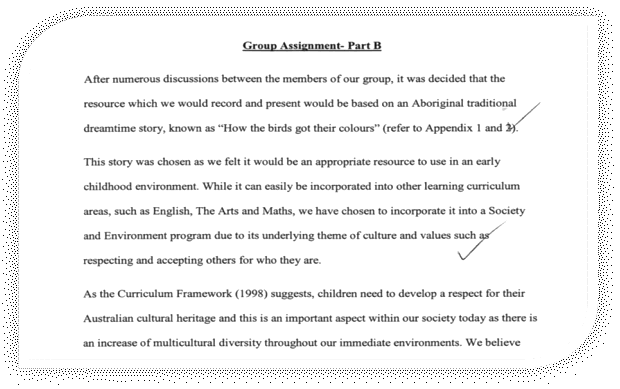
Figure 8: How the birds got their colours
The graphic notation here was typical of many groups using a narrative approach to this project. The linear plan roughly represents where the sounds and narrations would fit across a timeline. The final product was a story with sound effects using a mix of live recorded percussion sounds. A portable digital recorder was used to record these and the final mix was done on the computer using Acid Music Studio 7. The acoustic sounds and instruments suited the story very well.
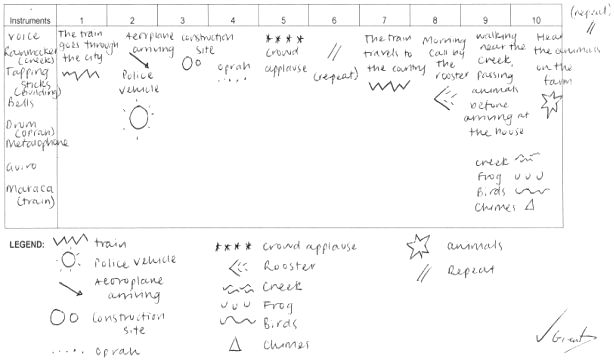
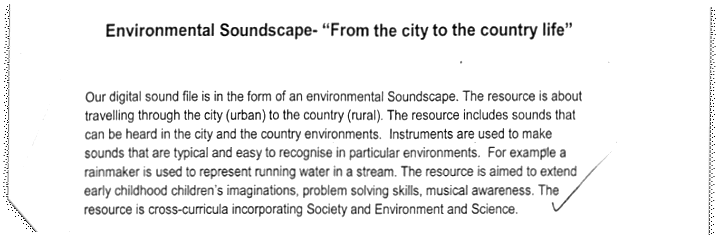
Figure 9: From the city to the country life
Another popular approach was to design a soundscape. In many cases, as the one above, a legend was used to define the sounds represented across the timeline. The placement of these sounds was also a lot more defined. This was needed as there was no narration to cue the performers in. This group used a mixture of recorded live sounds and packaged digital loops mixed on Acid Studio 7. The sounds were quite authentic: traffic noises; sirens; birds; and, animals. The contrast between the city and country sounds was very effective.
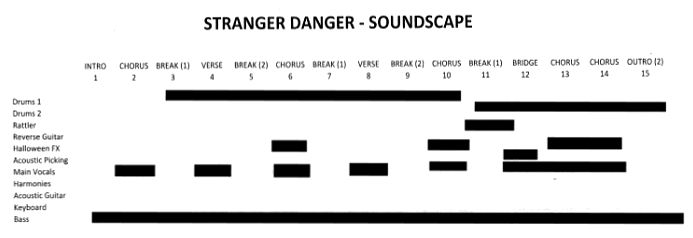
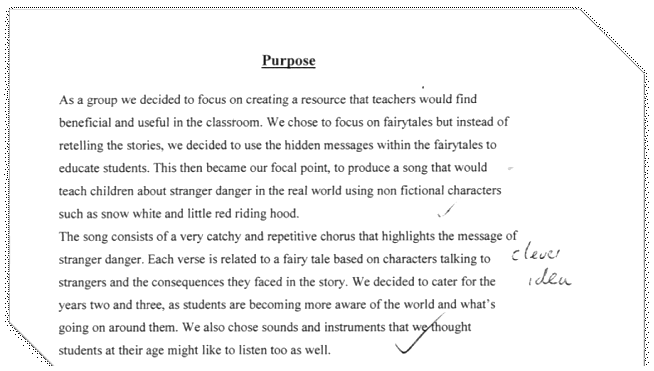
Figure 10: Stranger danger
This group created a song. The soundscape they refer to is actually more of a tracking cue for a home recording studio. This group consisted of some musically experienced students. The end result was a highly original song performed with quite a high level of artistry using a mix of the girls' vocals, instrumental playing along with pre-recorded and original digital loops. They did some of their work at home using more sophisticated software like ProTools (Avid, 2010). The final product included program notes, worksheets and lesson plans for a teacher to use in their early childhood classrooms.
We created the music using loops on Sony Acid Pro which we then bounced into Protools.We also recorded acoustic guitar and keyboard into protools as well as a bass line (using a bass sound on the keyboard).
We then recorded our main vocals and harmonies onto protools and hid any discrepancies using auto tune (a bit sneaky!). (Student: personal communication April 28, 2010)
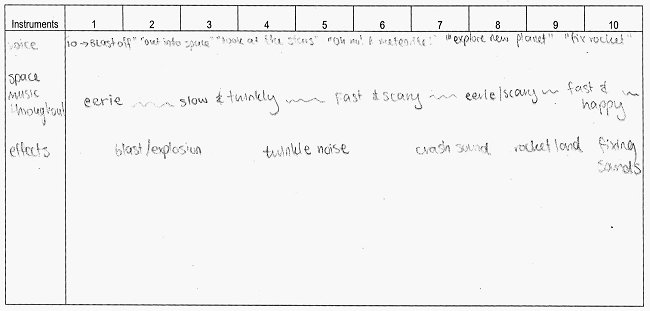
Figure 11: Celeste Symphony
This group created a narrative in a similar fashion to group A. A significant difference here was that they created their own narration and put the words on the time line. In keeping with their narrative style they wrote anecdotal notes as to the type of sounds they wanted as the music/soundscape progressed. They produced this work entirely using Acid Music Studio 7 and completed quite a professional sounding piece of music.
Other creations by other groups included the following themes: guessing the sound, feeling the emotions; moving to the beat; and, relaxing to the music.
Overall this project integrated technology with learning in a manner that was stimulating and engaging for students to participate in and was also supportive of their future work as early childhood teachers. Because of the portable nature of digital sound files, these were stored on CDs, carried in Mp3 players or shared across the internet. Some of them shared their creations across their iPods and iPhones. This modelled the use of technology that can be applied in the classroom. Thus ECU students experienced hands-on practical work in integrating technologies into the curriculum.
We knew that we could not be 'wrong' in our creation of music.Like so many other university teachers I have had many successes and many failures. As long as I can reflect and learn from my experiences I think I can improve my approach in helping these pre-service students in their preparation for the classroom.Music isn't only for those who can play a musical instrument.
Theory was easy to understand.
Students of all musical levels could participate in, and contribute to this unit.
I gained a strong understanding of what can be achieved in a primary classroom as a generalist.
As a result of ongoing reflective practice and of writing this self study, I believe my understandings of pre-service teachers' education has continued to shift away from delivering pure musical content and more and more towards involving students more in the creative music making process. A process in which students feel both 'safe and valued' (Wiggins, 2009). Whereas technology may be of great assistance in engaging the modern general student in music making, traditional experiences should not be overlooked either. To empower teachers to be more musically confident requires hands-on practice in music making (Harris, 2009). Also, I believe, developing and fostering a love for music surpasses the 'needs of musical proficiency on the part of the teacher' (Harris, p.30).
I don't think I am stumbling upon a new approach here. Nor have I discovered an old approach with new technologies. But I have presented a teaching method, which is a work in progress. It is a method designed to integrate the old with the new, and encompass a challenging and ever-changing educational landscape in our modern world. It is one that I hope will engage students from many different backgrounds of musical experiences and skills; with a view to encourage creative, innovative and collaborative learning. It uses the concept of 'loops' as a vehicle for learning about music, participation in music and for the creation of music. My next step will be to reflect on portable technologies as a means of further engaging pre-service teachers in creative music making. I will be looking at new ideas and new technologies that can help enable pre-service teachers to confidently facilitate music activities in their future classrooms without ever having to lose the natural love of good old-fashioned music!
Avid. (2010). Sibelius: Groovy. Retrieved November 11, 2010, from http://www.sibelius.com/products/groovy/index.html
Boud, D. & Falchikov, N. (2006). Aligning assessment with long-term learning. Assessment and Evaluation in Higher Education, 31(4), 399 - 413. DOI: 10.1080/02602930600679050
Boyd, E. M., & Fales, A. W. (1983). Reflective learning: Key to learning from experience. Journal of Humanistic Psychology, 23(2), 99-117. doi: 10.1177/0022167883232011
Bradley, D., Noonan, P., Nugent, H., & Scales, B. (2008). Review of Australian higher education. Canberra: Australian Government. http://www.deewr.gov.au/highereducation/review/pages/reviewofaustralianhighereducationreport.aspx
Crotty, M. (1998). The foundations of social research: Meaning and perspective in the research process. St Leonards: Allen & Unwin.
Farmer, B. (1982). Springboards: Ideas for music. Melbourne: Nelson.
FlexiMusic. (2010). Kids composer. Retrieved November 11, 2010, from http://www.fleximusic.com/
Gault, B. (2005). Music learning through all the channels: Combining aural,visual and kinesthetic strategies to develop musical understanding. General Music Today, 19(7), 7-0. doi: 10.1177/10483713050190010103
Harris, M. (2009). Music and the young mind: Enhancing brain development and engaging learning. Maryland: Rowman & Littlefield.
Heinz, K. (2010). BEP Freestyle. Retrieved November 10, 2010, from YouTube: http://www.youtube.com/watch?v=iKjnwxX_9Zw
Holden, H., & Button, S. (2006). The teaching of music in the primary school by the non-music specialist. The British Journal of Music Education, 23(1), 23-38. doi: 10.1017/S0265051705006728
Image Line Software. (2010). Fruity Loops. Retrieved November 11, 2010, from http://flstudio.image-line.com/index.html
Jasper, M. A. (2005). Using reflective writing within research. Journal of Research in Nursing, 10(3), 247-260. doi: 10.1177/174498710501000303
Lane, A. M. (2006). Teaching children to read music: A comparison of two methods for Elementary Music Teachers. The Canadian Music Educator, 48(1), 39-43.
Leask, J., & Thomas, L. (1998). Upbeat: Music education in the classroom. AUS: Scholastic.
Moore, A. (2001). Rock: The primary text: Developing a musicology of rock (2nd ed.). Hampshire: Ashgate.
New Media Consortium, & Educause Learning Initiative. (2007). The Horizon Report. USA: The New Media Consortium.
Noonan, S. (2005). Hands on music outcomes. Perth: Rossendale Press.
Pascoe, R., Leong, S., MacCallum, J., Mackinlay, E., Marsh, K., Smith, B., & Winterton. (2005). Augmenting the diminished: National review of school music education. Perth: Australian Government Department of Education, Science and Training.
Pink Floyd (1973). Money. On Dark Side of the Moon [record]. UK: Harvest.
Podbean. (2010). Podcast hosting, social subscribing, 2010, available from https://www.podbean.com/
Pound, L., & Harrison, C. (2003). Supporting musical development in the early years. Buckingham: Open University Press.
Propellerhead Software. (2010). ReCycle. Retrieved November 11, 2010, from http://www.propellerheads.se/
Raber Hedberg, P. (2008). Learning Through reflective classroom practice: Applications to educate the reflective manager. Journal of Management Education, 33(1), 10-36. doi: 10.1177/1052562908316714
Russell-Bowie, D. (2002). Student teachers' anxiety in relation to music education. Academic Exchange Quarterly, 6(1), 132-137.
Schön, D. (1986). Educating the reflective practitioner. USA: Jossey-Bass.
Seddon, F., & Biasutti, M. (2008). Non-music specialist trainee primary school teachers' confidence in teaching music in the classroom. Music Education Research, 10(3), 403-421. doi: 10.1080/14613800802280159
Seitz, J. A. (2005). Dalcroze, the body, movement and musicality. Psychology of Music, 33(4), 419-435. doi: 10.1177/0305735605056155
Sinclair, C., Jeanneret, N., & O'Toole, J. (Eds.). (2009). Education in the arts: Teaching and learning in the contemporary curriculum. Melbourne: Oxford University Press.
Sony. (2010). Sony Creative Software. http://www.sonycreativesoftware.com/
Sword, H. (2009). Writing higher education differently: A manifesto on style. Studies in Higher Education, 34(3), 319-336. doi: 10.1080/03075070802597101
Vella, R. (2000). Music appreciation: a manual for listening, composing and improvising. NSW: Currency Press.
Walkerden, G. (2009). Researching and developing practice traditions using reflective practice experiments. Quality and Quantity, 43(2), 249-263. doi: 10.1007/s11135-007-9103-5.
Western Australia Curriculum Council. (1998). The Curriculum framework: Learning statement for the arts. Perth: Curriculum Council. [see current version at http://www.curriculum.wa.edu.au/internet/Years_K10/Curriculum_Framework]
Wiggins, J. (2007). Authentic Practice and Process in Music Teacher Education. Music Educators Journal, 93(3), 36-42. doi: 10.1177/002743210709300318
Wiggins, J. (2009). Teaching for musical understanding (2nd ed.). Rochester: Center for Applied Research in Musical Understanding.
Wiggins, R. A., & Wiggins, J. (2008). Primary Music Education in the Absence of Specialists. International Journal of Education & the Arts, 9(12), 1-27.
Williams, D. B., & Webster, P. R. (2006). Experiencing music technology. USA: Thompson Schirmer.
Wren, J., Campbell, A., Heyworth, J., & Bartlett, R. (2010). Improving marking of live performances involving multiple markers. In Curriculum, technology & transformation for an unknown future: Proceedings ascilite Sydney 2010. http://www.ascilite.org.au/conferences/sydney10/Ascilite%20conference%20proceedings%202010/Wren-concise.pdf
| Author: John Heyworth (MMusTech, BEd) has had over 25 years experience teaching in early childhood, primary, secondary and intensive language centres with the Department of Education and Training in Western Australia. This involved primary classroom teaching as well as working in various roles including ICT support and music and drama specialist teaching. Currently he is a full time lecturer in primary generalist education at Edith Cowan University. Email: j.heyworth@ecu.edu.au Please cite as: Heyworth, J. (2011). Jumping through 'loops': A reflective study on preparing generalist pre-service teachers to teach music. Issues In Educational Research, 21(1), 42-64. http://www.iier.org.au/iier21/heyworth.html |